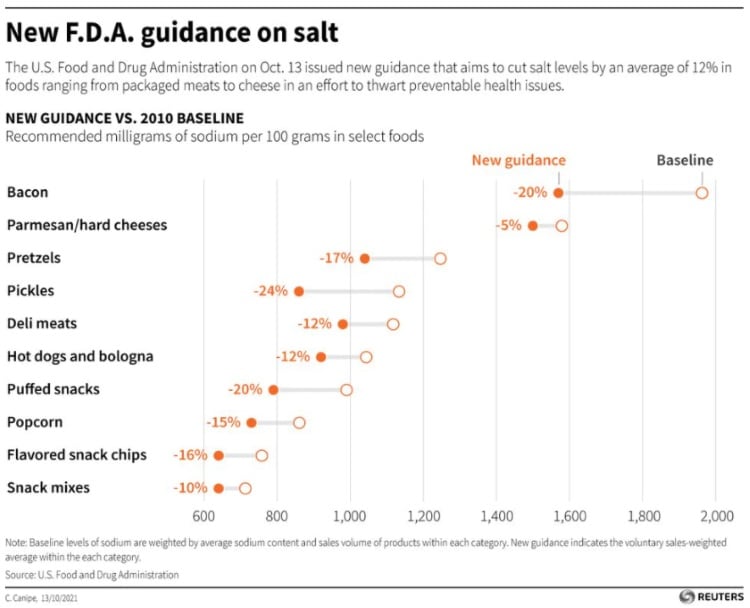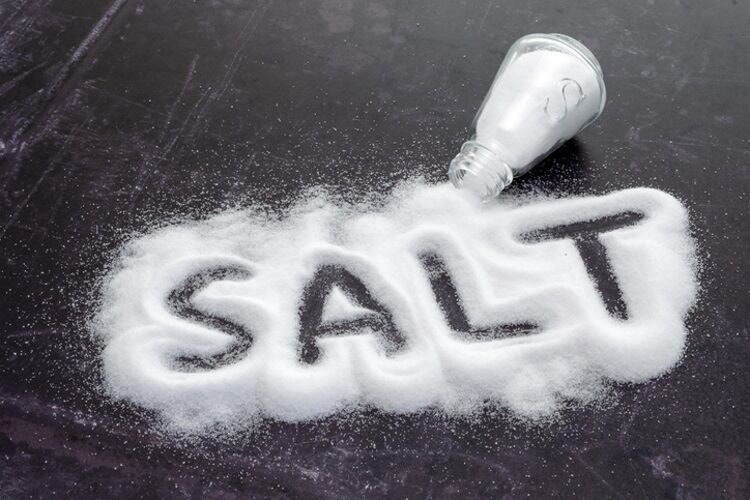Americans typically consume too much salt, most commonly as a result of eating foods to which sodium chloride has been added during manufacturing and commercial food preparation.
The average American salt intake is around 3,400 milligrams per day, almost 50% more than the ‘more lenient’ recommended daily limit. The Dietary Guidelines for Americans, 2020-2025 advises people 14 years and older to limit their consumption to 2,300 mg/day. The American Heart Association takes it further, with the ‘ideal limit’ of 1,500 mg per day.
The dangers of too much salt
Excessive salt intake is directly linked to chronic conditions like heart disease, diabetes and obesity, all of which are preventable through better diets.
Unfortunately, though, the US is facing an ever-growing public health epidemic, costing the country billions in annual health care costs and hundreds of thousands of lives lost.
The pandemic has only amplified these health disparities, particularly impacting the country’s poorer communities.
“Hundreds of thousands of Americans die each year from chronic disease related to poor nutrition, and by some estimates, the total economic costs range upwards to a trillion dollars per year,” US Department of Health and Human Services secretary Xavier Becerra said in a statement.
“The COVID-19 pandemic has underscored the need to ensure everyone has access to healthy and nutritious food. Improving the quality of food and nutrition is not only important to boost individual health outcomes – it is an essential step towards tackling widespread health disparities.”
The FDA’s mission
According to acting FDA commissioner Janet Woodcock and Center for Food Safety and Applied Nutrition (CFSAN) director Susan T. Mayne, a cornerstone of the FDA’s public health mission is to reduce the burden of chronic disease through improved nutrition.
“We’re taking a critical step to further address preventable diet-related chronic diseases and advance health equity that we hope will become one of the most significant public health nutrition interventions in a generation,” they said in a statement.
The FDA first proposed recommendations for reducing salt content in 2016, which it said was successfully accepted and implemented across the country by many companies.
The agency is again pushing the envelope in the hope to reduce the consumer’s average salt intake by another 400mg a day, which will equate to approximately 12% over the next two and a half years.
The agency has released short-term sodium reduction targets for 163 categories of processed, packaged and prepared foods, including different types of baked goods, cereals, cheese, pickles, nuts, sauces, deli meats, crackers and poultry products.

It is hoping the gradual drop in sodium will be the most successful approach for consumers and producers.
In a statement, the FDA said, “The final guidance outlines short-term goals that we’re recommending the food industry work to meet as soon as possible to help optimise public health.
“We will continue our discussions with the food industry as we monitor the sodium content of the food supply to evaluate progress. In the future, we plan to issue revised, subsequent targets to further lower the sodium content incrementally and continue to help reduce sodium intake.
“This iterative approach will help support gradual reductions in sodium levels broadly across the food supply so that consumers’ tastes adjust, health outcomes improve and no one company or category of food is singled out or scrutinised.”
The guidance is fully voluntary and non-binding and can be accessed here.




